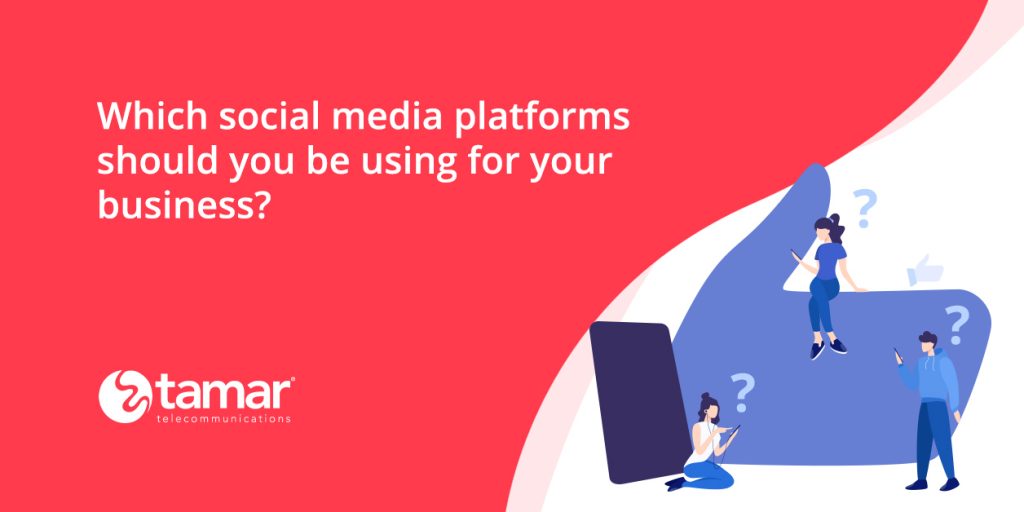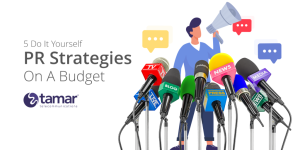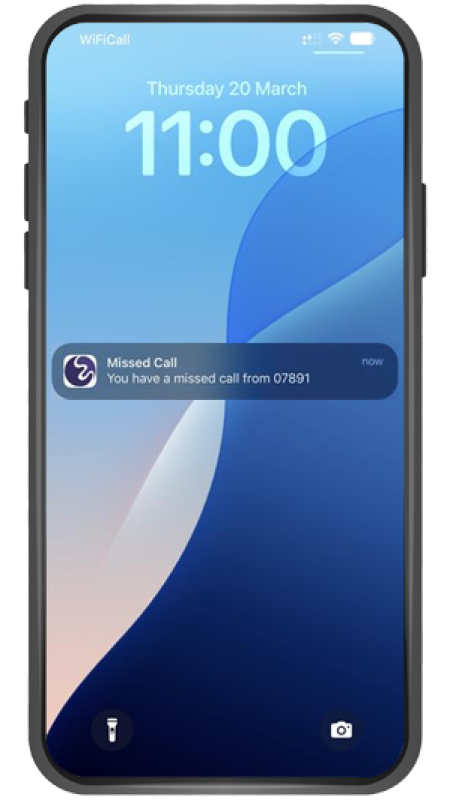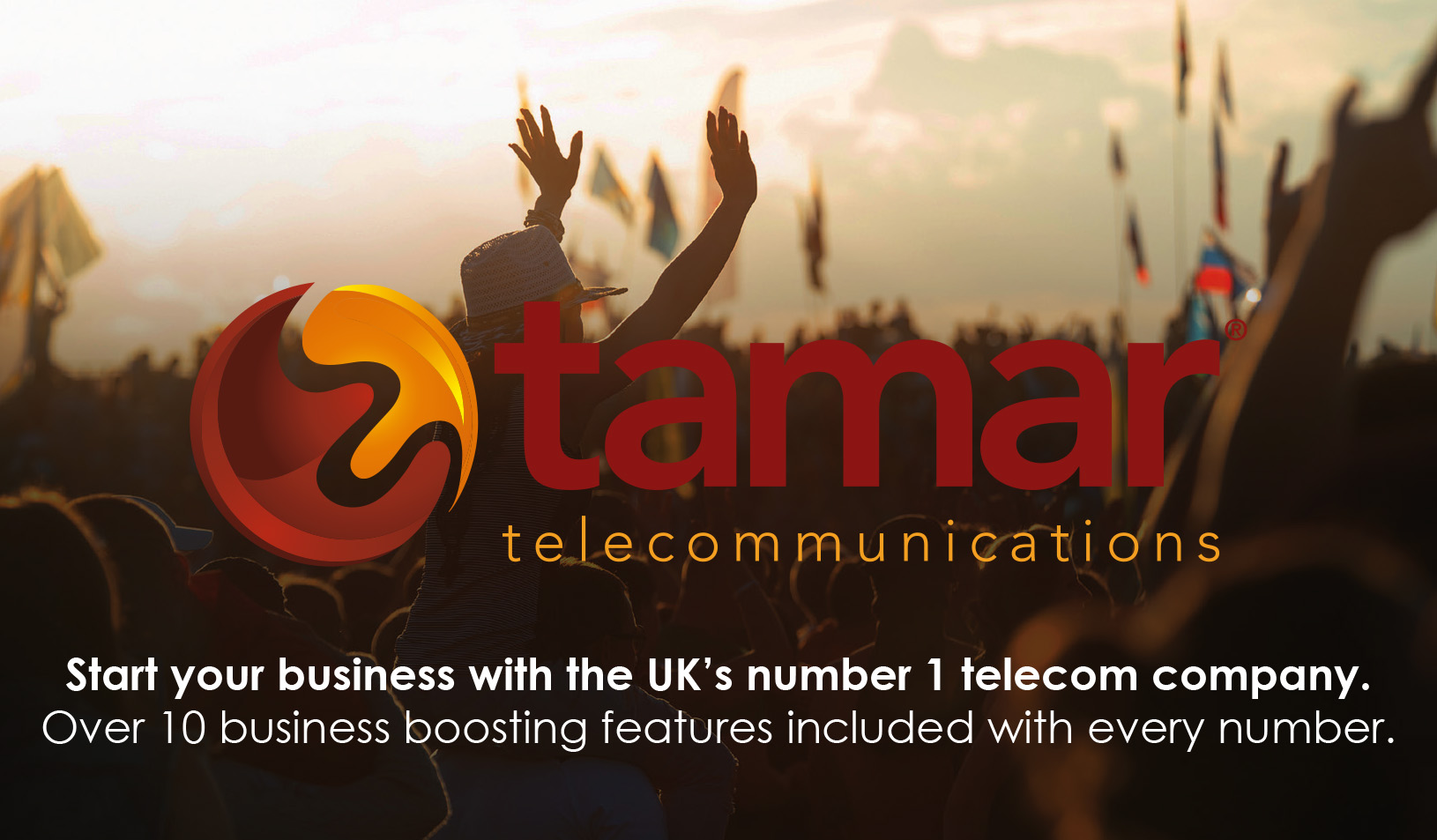There are two key questions to consider before you choose which social media platforms to use for a business:
- Which marketing objectives will the business work towards through its use of social media?
- Which social media platforms are being used by the people or organisations the business wants to reach, and how are those people using each platform?

Defining your social media marketing objectives
From Facebook to Twitter, Snapchat to LinkedIn, each of the major social media platforms is calibrated to help marketers achieve a certain set of objectives. In our experience:
• Facebook works well for reaching new users to build brand awareness;
• Instagram works well for highlighting a brand’s offering;
• Snapchat works well for driving customer engagement;
• Twitter works well for developing a brand’s tone-of-voice; and
• LinkedIn works well for sales, networking with prospective partners, and talent acquisition.
These are just a few examples of what each of the big social media platforms can do from a marketer’s perspective. The reality is that all the platforms are used in lots of different ways.
Think carefully about the specific goals you aim to achieve through social media marketing, then make a shortlist of social platforms that seem well-suited to your objectives.
Identifying social platforms that are used by the right audience, in the right ways
With your social media marketing goals established, we can move on to choosing the platform(s) with the right users (and user habits) to deliver on your objectives.
It is usually possible to establish which social media a brand’s target audience will use by considering a few key demographic factors.
Age is perhaps the single most reliable indicator of which social media a person will use. Research from the social media management software provider Sprout Social has demonstrated significant differences in social platform preference, based on the user’s age:
• 84% of 25-30s use Facebook, compared to just 51% of 13-17s and 46% of those aged 65 and above.
• 72% of 13-17s use Instagram, compared to 23% of 50-64s.
• The group likeliest to use Twitter are 18-29s (28%). The same platform is used by just 7% of 65+s.
• The group likeliest to use LinkedIn are 30-40s (37%). The same platform is less popular with 18-29s (28%).
• The younger the user, the likelier they are to use Snapchat. 69% of 13-17s are users, compared to just 9% of 50-64s and 3% of 65+s.

B2C vs. B2B is another indicator of which social platforms will best suit a brand and its audience.
Whereas Snapchat is used almost exclusively in a B2C context, the opposite is true of LinkedIn, which is the only major social network devoted solely to business. If you are going to use social to promote a B2B product, LinkedIn would almost certainly be a better platform to use than Snapchat; and vice versa.
If you want to be really thorough in establishing which social platforms your target audience are likely to use, there are plenty of other demographics to consider. For instance, Instagram has been shown to be used by 43% of women and only 31% of men. Income and location (urban/suburban/rural) are also important indicators.
A small caveat before we continue:
Although demographic indicators can help us gauge which platforms are likely to help a certain business reach its audience, exceptions to the norms are commonplace. For instance, some B2B companies have been highly successful in marketing their wares on Facebook, while many B2C brands have reached numerous older users on social platforms where relatively few users are in the older age categories, like Instagram.
How many social platforms should my business use?
By this point, you should have some idea of which social media platforms seem a good fit for your audience and objectives. We suggest starting your social media marketing work by targeting two or three of the platforms which are at the top of your list, based on the factors we’ve discussed.
Almost every business needs a Facebook page. Not only is this the platform that can reach the highest share of the population; Facebook page data are also used by search engines as a ranking factor in search results. This does not mean to say Facebook should be your top priority, and it may well be the case that you will benefit by spending far more time on another of your chosen platforms.
Any social profile will require significant investment of resources – for instance, budget for content creation and sponsored posts – and time, in order to perform well against marketing objectives. We suggest setting your business up on a couple of platforms to start with, then put additional resources into one of those platforms, or an alternative platform, based on the results you see.







